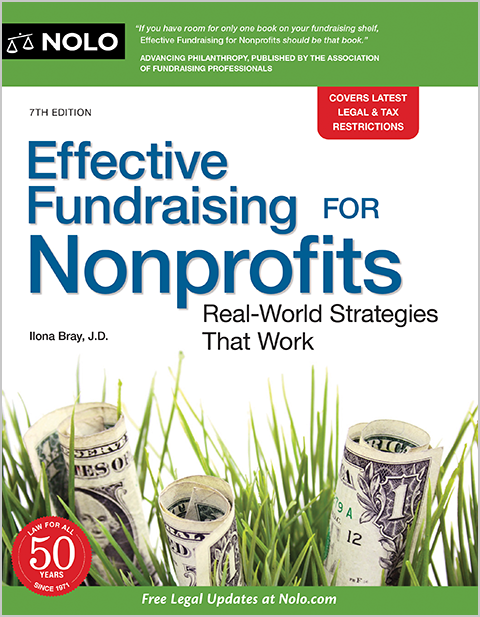Online Fundraising: Effective Digital Campaigns for Nonprofit Success
Wiki Article
The Function of Neighborhood Interaction in Nonprofit Fundraising: Building Lasting Relationships for Sustainable Support
Community involvement is significantly acknowledged as a crucial component of effective nonprofit fundraising. By cultivating genuine partnerships with regional stakeholders, organizations can grow count on and loyalty, which are necessary for sustainable support. Nonetheless, the approaches and techniques employed to involve communities vary widely, raising crucial questions concerning performance and effect. What are the best techniques for growing these essential links, and just how can nonprofits measure their success in this sector? Recognizing these characteristics might considerably affect the future of fundraising initiatives and the overall goal of not-for-profit companies.Recognizing Community Interaction
Community involvement is an important element of effective not-for-profit fundraising efforts. It describes the techniques and tasks that companies employ to attach with their neighborhood areas, promoting relationships that are mutually useful. Recognizing neighborhood engagement includes identifying its multifaceted nature, that includes participation, cooperation, and outreach. Nonprofits must identify vital stakeholders-- such as area participants, regional businesses, and other companies-- to produce efficient involvement strategies.Efficient neighborhood interaction is predicated on energetic listening and responsiveness to the requirements and interests of the area. This procedure involves obtaining feedback, recognizing neighborhood dynamics, and making certain that the company's goal lines up with local concerns. Engaging the neighborhood can take numerous kinds, including public conferences, volunteer chances, and collaboration efforts, each designed to motivate participation and investment in the company's goals.
In addition, community involvement ought to be come close to as an ongoing dialogue as opposed to a single effort. By cultivating an inclusive atmosphere where neighborhood voices are heard and valued, nonprofits can construct a strong foundation for future fundraising endeavors. Inevitably, a deep understanding of community interaction equips companies to create authentic links that boost their overall performance and sustainability.
Advantages of Strong Relationships
Strong connections created through neighborhood involvement return many advantages for nonprofit fundraising efforts. Most importantly, these relationships foster depend on and credibility, crucial components in motivating contributors to add. When prospective advocates see a nonprofit proactively associated with their community, they are more probable to think in its goal and influence.
In addition, these connections help with reliable interaction. Nonprofits can take advantage of their connections to share tales of effect, updates, and requires, ensuring that fans remain enlightened and engaged. This open line of communication not just enhances bonds yet likewise urges referral promotion, broadening the not-for-profit's reach.
Finally, solid area ties can bring in new partners and enrollers. Individuals and organizations are much more inclined to line up with companies that demonstrate significant community participation, offering added resources and assistance that can substantially improve fundraising capacities. Thus, cultivating durable connections with area engagement is important to a nonprofit's long-lasting fundraising success.
Approaches for Efficient Interaction
How can nonprofits effectively engage their communities to improve fundraising efforts? Regular updates, involving web content, and calls-to-action can galvanize area passion and engagement.Second, hosting area events, such as workshops, volunteer opportunities, or fundraising drives, promotes face-to-face interaction, allowing nonprofits to showcase their impact and efforts. These occasions not just increase funds but additionally grow partnerships and allow community participants to engage straight with the reason.
Third, executing customized interaction methods can improve interaction. Tailoring messages to details contributor segments based on interests and previous contributions cultivates a sense of belonging and financial investment in have a peek at these guys the organization's mission.
Finally, creating collaborations with neighborhood services and community leaders can magnify outreach initiatives. Collective efforts can boost exposure and reliability, showing a collective dedication to the neighborhood's health. By integrating these techniques, nonprofits can build enduring relationships that improve fundraising initiatives and drive sustainable assistance.
Measuring Interaction Success
While involving the area is critical for successful nonprofit fundraising, gauging the effectiveness of these interaction efforts is similarly vital. Establishing clear metrics enables organizations to analyze how well they are getting in touch with their target market and attaining their fundraising objectives. Key performance signs (KPIs) such as contributor retention prices, volunteer involvement degrees, and involvement on social media platforms offer tangible data for assessment.
Routinely analyzing these metrics enables organizations to pivot their techniques when required, guaranteeing that community interaction continues to be lined up with their overall mission. Moreover, sharing these results with stakeholders cultivates transparency and develops trust, urging more neighborhood involvement. Inevitably, a robust dimension structure not only educates future fundraising efforts yet additionally reinforces the connection in between the nonprofit and its fans, preparing for lasting success.
Situation Researches in Neighborhood Influence
Many instance studies illustrate the extensive influence that neighborhood engagement can have on not-for-profit fundraising success. One notable instance is the "Food for Thought" effort, where a neighborhood food bank partnered with colleges and businesses to host area suppers. These events not only elevated funds but likewise promoted a feeling of belonging amongst participants, dramatically increasing donor retention rates.Another engaging case is the "Green Spaces Job," which included neighborhood residents in the revitalization of urban parks. This campaign not just gathered economic assistance from local companies however likewise cultivated a volunteer base that added to recurring upkeep and shows. The feeling of possession and satisfaction amongst area participants equated into sustained contributions.
In the realm of arts, the "Art for All" campaign successfully engaged regional musicians and customers to produce collective art setups, bring about raised presence and contributions for a regional arts nonprofit.
These instances highlight that when nonprofits prioritize area involvement, they can produce enduring connections that improve fundraising initiatives, ensuring sustainable support and cultivating a vivid area society. Such cases show that area interaction is not simply a technique however a necessary pillar of nonprofit success.
Verdict
In verdict, neighborhood interaction is integral to the success of not-for-profit fundraising efforts. By fostering strong relationships with neighborhood stakeholders, organizations website link enhance trust fund and credibility, resulting in improved benefactor retention and loyalty. Applying efficient involvement approaches and gauging their effect guarantees that nonprofits can grow and adapt. Inevitably, a robust foundation of area support not just magnifies fundraising possible however likewise cultivates a culture of cooperation, essential for accomplishing long-lasting business goals and maintaining significant influence.Nonprofits should determine vital stakeholders-- such as neighborhood participants, local companies, and various other companies-- to create reliable involvement strategies.

In final thought, community involvement is important to the success of nonprofit fundraising initiatives.
Report this wiki page